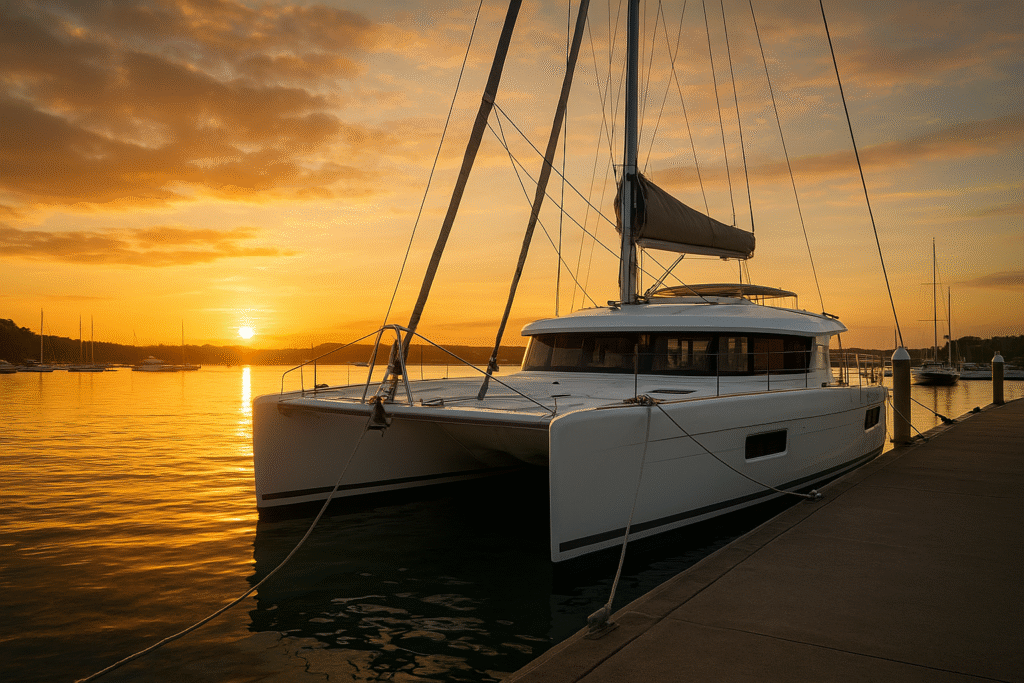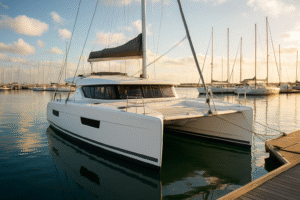
New Zealand Yacht Biosecurity Rules – What to Expect on Arrival
Table of Contents
ToggleNew Zealand yacht biosecurity rules
Stricter New Zealand yacht biosecurity rules mean more inspections. Learn how to prepare hull, paperwork, and evidence before arriving in NZ.
⚓ Arriving in New Zealand? Here’s What’s Changed
If you’re planning to sail into Aotearoa this season, you’ve probably heard that New Zealand yacht biosecurity rules have tightened dramatically. And you’d be right.
Since mid-2025, MPI and Biosecurity NZ have upgraded both their procedures and equipment — meaning that a “quick look under the hull” now involves a GoPro with lights, full footage, and a very thorough inspection.
Gone are the days when a few photos of your antifoul job were enough. Now, officials expect a complete hull management plan, evidence of your last haul-out, and even details of the paint used. If you can’t provide that before arrival, you might find yourself hauled out and footing a costly cleaning bill.
🧭 New Zealand Yacht Biosecurity Rules in Action: Real Arrival Data
Since the start of August, more than 46 yachts have arrived in New Zealand waters. MPI’s new procedures show just how serious they’re getting about marine biosecurity:
37.5% did not provide evidence before arrival
62.5% did submit evidence
Of these, 43% passed based on the documentation and footage provided
The remaining 57% failed, mostly due to missing footage, unclear images, or unverified haul-out data
That’s a big number. And in MPI terms, “failed” means compulsory haul-out and hull cleaning — often at short notice and in ports where space is tight. It’s not just time-consuming; it’s expensive.
🧰 What MPI Now Looks For
MPI’s focus is all about keeping invasive species out of New Zealand’s unique marine environment. The new New Zealand yacht biosecurity rules mean they’ll almost certainly inspect:
The underwater area of your vessel — using GoPro footage with strong lights, not just surface photos.
Your hull management plan — a written summary of antifoul use, frequency of cleaning, and where/when your vessel was last maintained.
Proof of antifoul paint type and date of application — receipts or invoices make a big difference.
Pre-arrival photos or video — ideally taken within the last month if you haven’t recently hauled out.
If you can’t provide this information upfront, expect delays. MPI’s inspection queue has grown longer this season, especially in Opua and Marsden Cove.
📦 Preparing in Advance: Your Biosecurity Checklist
Here’s how to make life easier for yourself (and your delivery crew):
1. Gather Documentation Early
Don’t wait until you’re at sea. Send MPI your haul-out receipts, antifoul type and date, and hull management plan before you leave.
Email submissions can go to your Customs agent or local Biosecurity office — check MPI’s yacht arrival info page.
2. Capture Clear Evidence
Use a GoPro or waterproof camera with lights. Record the full length of the hull, keel, and rudder. If it’s a catamaran, make sure to include between the hulls.
Good light is crucial — it’s often why 57% of submitted videos fail inspection.
3. Keep Everything Onboard and Backed Up
MPI may ask to see digital copies again upon arrival. Keep them on a USB stick and a cloud backup. Redundancy is your friend.
4. Clean Before You Go
Even if your antifoul looks okay, a quick scrub before departure can make all the difference. Inspectors are getting sharper and can spot growth you missed.
For full details on entry requirements, check MPI’s official yacht arrival page and Biosecurity New Zealand’s hull cleaning guidelines.
For official details, visit MPI’s Yacht and Small Craft Entry Guidelines — they outline the latest New Zealand yacht biosecurity rules and required documentation.
⚓ Anecdote: The GoPro Surprise
A delivery skipper I know brought a 45-foot Beneteau into Opua in early September. He thought he’d done everything right — paperwork, haul-out receipt, even photos. But the MPI diver spotted slight algae growth behind the rudder using their GoPro setup.
Result?
A mandatory haul-out, $1,200 cleaning bill, and a three-day delay before clearance.
Moral of the story? If you’re not 100% sure, record fresh video footage before you set sail.
🌊 Hull Management Plan: What They Want to See
MPI wants to know that your vessel has a consistent plan for keeping the hull clean — not just a one-off antifoul job. Here’s what your Hull Management Plan should include:
Date and place of last haul-out
Type and brand of antifoul paint used (e.g., Altex, International, or Seajet)
Maintenance schedule (how often the hull is checked or cleaned)
Intended maintenance while in NZ
Photos of current condition
Having this ready makes you look professional — and far less likely to get flagged for a physical inspection. You can find examples of compliant hull management templates on Marine Biosecurity Toolbox.
You can download template examples and further guidance on antifoul compliance from Marine Biosecurity Toolbox.
⚠️ Failing New Zealand Yacht Biosecurity Rules: The Cost of Non-Compliance
Failing MPI inspection isn’t the end of the world, but it’s not fun either.
A forced haul-out in New Zealand can cost between $800 and $1,500, not including travel lift fees or the cost of new antifoul. More importantly, you’ll lose precious cruising time waiting for clearance.
Think of it this way: a few hours preparing evidence before departure could save days and thousands of dollars later.
💬 Communicating with MPI
MPI inspectors are professionals, but they’re busy. The better prepared you are, the smoother your clearance will go. Here’s what helps:
Send documents and footage in advance to your port of entry.
Be polite and proactive — tell them when the footage was taken and what type of camera was used.
Ask for confirmation that your documents are sufficient before you depart.
As one skipper from Fiji said:
“It’s not about getting away with it — it’s about showing them you take New Zealand’s biosecurity seriously.”
🌤️ What Yacht Delivery Solutions Recommends
At Yacht Delivery Solutions, we’ve seen firsthand how much time and money can be saved through early compliance.
Our skippers now help clients prepare hull management plans, film inspection videos, and submit documents before even leaving their departure port.
If you’re planning a voyage from Fiji, Tonga, or Australia, contact us early — we can walk you through the full process, including MPI liaison and customs paperwork.
Check out MPI’s official vessel biosecurity guidance for up-to-date requirements.
🧾 Key Takeaways
MPI’s biosecurity inspections are now stricter than ever.
They use GoPros with lights to check the hull’s underwater area.
You must submit a hull management plan, antifoul receipts, and pre-arrival evidence.
Sending everything in advance reduces delays and costs.
Yacht Delivery Solutions can help you prepare the right documentation.
⚓ Conclusion
New Zealand’s clean marine environment is one of its greatest treasures — and protecting it means all arriving yachts must meet high standards.
By following the updated New Zealand yacht biosecurity rules, gathering your documentation early, and submitting clear hull footage, you can enjoy a smooth arrival into this stunning country.
At Yacht Delivery Solutions, we make sure every arrival is safe, compliant, and stress-free — because your time in New Zealand should be spent exploring, not waiting on the hardstand.
Learn more about how Biosecurity New Zealand protects local waters: https://www.biosecurity.govt.nz/.


Leave a reply